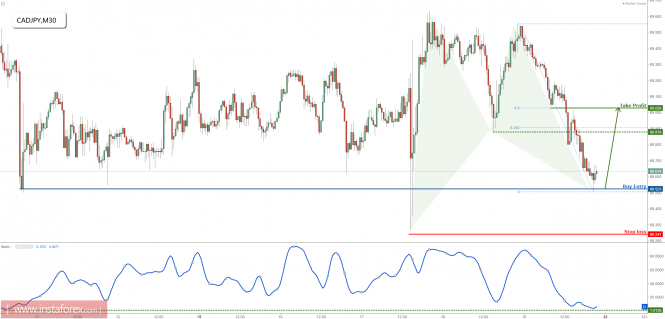EUR/USD: in search of a neutral rate and in anticipation of the Nonfarm report
Company does not offer investment advice and the analysis performed does not guarantee results
The dollar index today made an unsuccessful attempt to return to the area of 97 points: at the beginning of the US session, the greenback had once again began to lose positions throughout the market.
Dollar bulls found themselves in a difficult and rather contradictory situation: on the one hand, the Federal Reserve declares a gradual tightening of monetary policy, on the other hand, representatives of the regulator increasingly say that the rate is approaching its neutral level, when its size does not hold back the development of the economy, but does not "overheat" it. That is why traders are now so sensitive to the slowdown in the key macroeconomic indicators of the United States – since this fact can reduce the determination of the members of the regulator about the prospects of monetary policy next year.
Here it is necessary to make a reservation at once: market participants still lay in the current prices a high probability of a rate hike in December. Although in recent years, traders have somewhat doubted this step: if a month ago, this probability was about 80%, today it is 67%. In my opinion, these are understated figures – the Federal Reserve will not resort to "shock therapy", refusing to raise the rate for the fourth time this year. Fed members are too transparent and persistent in making it clear that they are ready to show appropriate determination at the December meeting. Therefore, the main intrigue concerns the prospects for next year and not this year.
The dollar bulls have a reason for concern – several members of the Fed have recently changed their rhetoric, significantly softening their positions. For example, Jerome Powell in early October clearly stated that the rate is still "too far from neutral". However, last week his position changed - he said that the rate is "slightly below" the level that can be considered neutral. Vice-Chairman of the Fed Richard Clarid also raised this issue: in his opinion, the rate is at the lower limit of the range where the notorious neutral level is located.
The minutes of the Fed's November meeting also show that the members of the regulator are gradually reducing their hawkish attitude. Thus, if at previous meetings they allowed the probability of exceeding the neutral level, this time the emphasis was placed differently. The Fed was again concerned about the slowdown in the world economy, tighter credit conditions, the decline in the housing market and other negative factors.
In other words, the general tone of rhetoric has become more cautious, and this fact has alerted traders, especially against the background of subsequent comments by Powell and Clarida. According to some experts, the Fed smoothly prepares the markets for the fact that the regulator will not raise the interest rate on a "regular basis": when a certain level is reached, the Fed will take a wait-and-see position, and all subsequent decisions will be taken situationally. And here the main intrigue is when exactly the regulator will pause the process of regular rate hikes, because the above mentioned range is quite wide – from 2.5% to 3.5%.
Although the issue is debatable, the fact that it is discussed puts indirect pressure on the markets. In particular, the yield of 10-year treasuries returned to three percent and continues to decline (at the moment – 2,838%). The growth of the dollar index also slowed - over the past month, the indicator tried to gain a foothold three times in the area of 97 points.
Thus, the dollar does not have sufficient grounds to make a price breakthrough, but it is also in no hurry to give up its positions. As I said above, in the light of such uncertainty, traders are more sensitive to the slowdown in macroeconomic indicators: in particular, the level of labor cost, which is an indirect indicator of inflation growth, is out in the red zone. Also disappointed by the ADP report, which came out in anticipation of tomorrow's Nonfarm. Although these indicators are of a secondary nature (compared to tomorrow's release), they were able to provoke additional pressure on the yield of treasuries and, accordingly, on the dollar.
This fact determines the current dynamics of the corrective growth of the EUR/USD pair. The single currency does not have its own arguments for growth – indirect support provides a likely compromise between Rome and Brussels. But Italy will present the updated budget next week, so the intrigue of this event is still there,
Thus, the further correctional growth of the pair depends on tomorrow's Nonfarm. If they come out in the "red zone" (especially in terms of wage growth), the pressure on the US currency will increase and, accordingly, the growth of EUR/USD will continue.
From a technical point of view, the situation has not changed since yesterday. The price on the daily chart is still on the middle line of the Bollinger Bands indicator, which indicates the absence of a bright trend movement. If the pair is fixed below 1.1340, then, firstly, the price will be between the middle and lower lines of the above indicator, and secondly – the Ichimoku Kinko Hyo indicator will form a bearish "Parade of lines" signal . The combination of these signals will open the way for the pair to a strong support level of 1.1250 (the lower Bollinger Bands line on the daily chart). If tomorrow's Nonfarm will disappoint, then the pair may again test the 14th figure.
Analysis are provided by InstaForex









